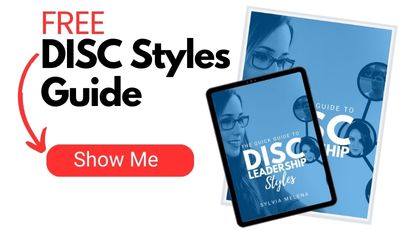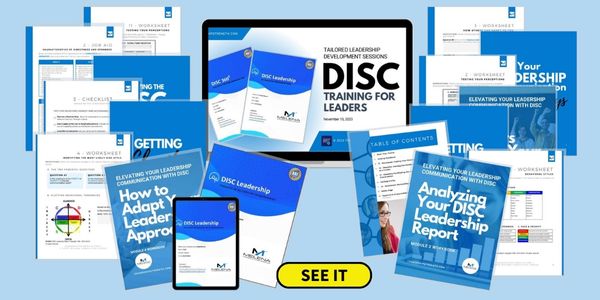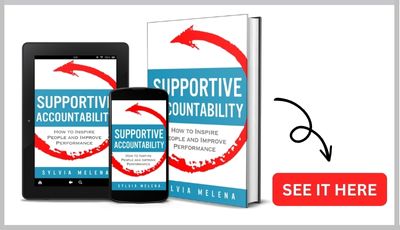¿Quiere leer este artículo en español? Haga clic aquí.
It’s Mind-Boggling
85% of employees at all levels experience conflict at work
Organizations lose about $359 billion yearly because of conflict
49% of conflict results from “personality clashes and warring egos”
CPP. Inc. Report1
So, Why Don’t We Simply Get Along at Work?
Because that’s often easier said than done.
But there’s a simple and highly effective tool that can help you eliminate the war of the personalities. It’s called DISC.
What is DISC?
DISC is a simple, practical, and easy-to-remember model that you can apply in many situations, including your interactions with your direct and indirect reports. And the DISC Leadership Assessment is a research-validated instrument that helps you understand people’s needs-motivated behaviors and emotions.
Emotions are generally neither bad nor good. Rather, they give us insight into underlying needs that motivate each person’s behavior.
What DISC Doesn’t Measure
While DISC is a valuable tool, it doesn’t measure intelligence, skills, education, experience, or values.
People are not their DISC styles. So much goes into how we behave and express our emotions. DISC is just one compelling lens that helps us understand and meet people’s needs to create a supportive and motivating work environment that drives performance.
The Four DISC Leadership Communication Styles
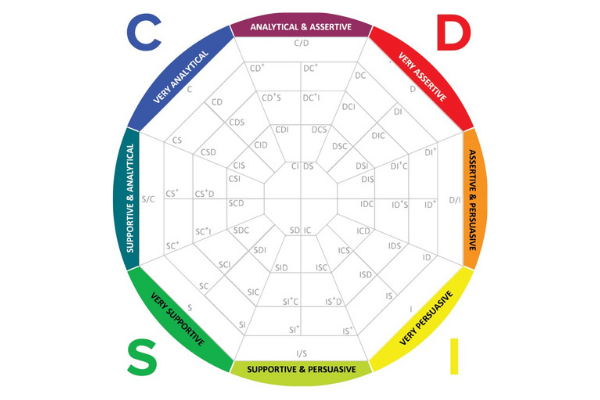
There are four primary DISC leadership communication styles in the model:
- Dominance,
- Influence,
- Steadiness, and
- Conscientious.
While there are four primary styles, most people exhibit a blend of styles, and each style has specific:
- Areas of Focus,
- Behavioral Tendencies, and
- Pace & Priority.
Free Copy of The Quick Guide to DISC Leadership Styles
Areas of Focus
Areas of focus are what each style tends to focus on when working, interacting, and handling daily activities.
- D – Dominance focuses on problems and challenges.
- I – Influence focuses on people and contacts.
- S – Steadiness focuses on pace and consistency.
- C – Conscientious focuses on procedures and constraints.
Differences in communication come with both challenges and benefits.
Sometimes the differences can throw a wrench in communication and create tension if not skillfully managed. How much tension depends on how marked the differences are, the degree of self-awareness of the parties involved, how well people adapt to each other’s needs, and other factors.
On a positive note, these differences also bring tremendous communication diversity and balance to your team, which can spark creativity and innovation. So, it’s important not to avoid opposing styles but rather to understand them, embrace them, and adapt accordingly.
Communication diversity on the team fuels rich and lively conversation, which ignites performance excellence when managed effectively.
Behavioral Tendencies
People’s observable behavior is either direct or indirect and either open or guarded.
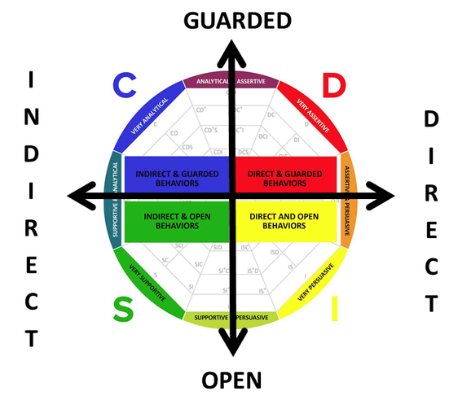
Directness has to do with the way people handle information and situations. It’s also about the level of control and assertiveness the person displays. Direct people demonstrate more control and assertiveness. Indirect people exhibit the opposite.
Openness describes how much people are inclined to be transparent and open about themselves. Openness is also about how much people tend to accept openness from others. People can be either open or guarded.
- D- Dominance tends to be direct and guarded.
- I- Influence tends to be direct and open.
- S – Steadiness tends to be indirect and open.
- C- Conscientious tends to be indirect and guarded.
Pace and Priority
Pace and priority can be huge sources of tension between the styles. People tend to be either faster-paced or slower-paced. Also, some styles prioritize people, whereas others prioritize tasks when communicating, working, or engaging in daily life.
- D- Dominance is faster-paced and task-focused.
- I- Influence is faster-paced and people-focused.
- S – Steadiness is slower-paced and people-focused.
- C- Conscientious is slower-paced and task-focused.
If you unintentionally overlook differences in pace and priority between you and your team members, it can lead to communication difficulties and, in some cases, workplace drama.
What kinds of challenges do you see arising from style differences?
Identifying and understanding the DISC styles in the workplace—your own and those of others—can enhance your appreciation for differences in needs-motivated behavior and emotion. It’s a practical and powerful way to get rid of the misunderstanding that creates unhealthy conflict and workplace drama.
DISC Training for Leaders
DISC Training for Teams
About the Author

SYLVIA MELENA is a Principal of Melena Consulting Group, a leadership and organizational development company. She is also the international award-winning and best-selling leadership author of Supportive Accountability: How to Inspire People and Improve Performance and its Spanish translation, Responsabilidad solidaria.
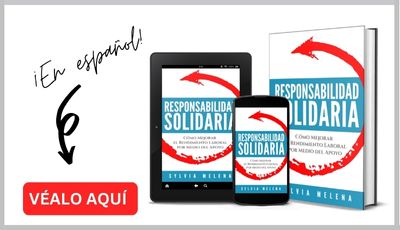
Reference: 1 CPP, Inc. Report


